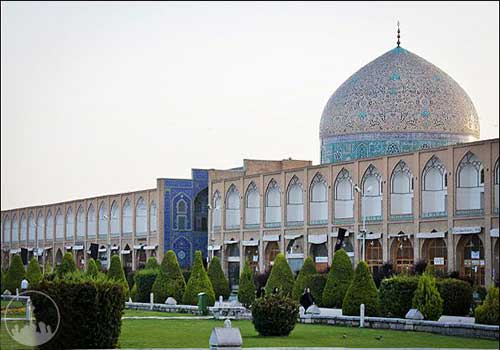This township which is in a north-south position, segregates the townships of the province into two eastern and western portions. To its north is the Markazi (Central) Province and to the south is in the neighborhood of the province of Fars. In its eastern direction, are the townships of Naein, Ardestan, Natanz and Kashan, and to the west are the townships of Golpayegan, Najaf Abad, Khomeini Shahr, Falavarjan and Shahreza. Its center is the city of Esfahan.
This city was the capital in the Parthian era, and in the Sassanide period came under the influence of the seven large influential families of Iran or the Espoharan. On the advent of Islam, till the early 4th century AH, it was under the jurisdiction of the Arabs, and was favored by Mansur one of the Abbasside Caliphs during his rule. In the year 319 AH, Mardavij Ziyari selected Esfahan as the capital and so too in the year 327 AH. when Rokneddin Deylami chose the same as the capital city during his rule. But in the year 443 AH. Togrol Saljuqi proved victorious here, and this was the cause of various erections such as mosques, buildings and palatial mansions in Esfahan. However, in the year 639 AH, Esfahan was invaded by the Mongols, and after their drawback the city flourished again. Only to witness severe damages during the assault of Teimoor the lame.
Shah Abbas Safavid was responsible for returning Esfahan to its former glory in the year 1000 AH. when this city was appointed as his capital. His successors were liable for the construction of palaces, and gardens of Sa'dat Abad and Farah Abad. After the decline of the Safavid dynasty and the fall of Esfahan by Mahmood Afqan, the city turned into shambles, thriving once more during the Afshar period. But during the Zandiyeh and Qajar reign, when the cities of Shiraz and Tehran were selected as capitals respectively, progress in the city of Esfahan came to a halt. This city saw further decline during the reign of Zilul Soltan, the offspring of Nasereddin Shah Qajar in the year 1276 AH
However, during the Pahlavi reign, the territory and city of Esfahan witnessed industrial development, and in the last two decades the city of Esfahan has thrived to a great extent. In that, focal renovations and changes have taken place. Today, Esfahan is one of the vital cities in respect to tourism not only in Iran, but also in the world.

Geographical Position, Esfahan
The province of Esfahan covers an area of approximately 107,029 square kilometers and is situated in the center of Iran. To its north, stand the Markazi (Central) Province and the provinces of Qom and Semnan. In the south, it is within the limits of the provinces of Fars, Kohkiluyeh and Booyer Ahmad. Eastwards, it is in the neighborhood of the provinces of Khorassan and Yazd. Whereas, in the west it has common borders with the provinces of Lurestan and Chahar Mahal and Bakhtiyari.
The city of Esfahan is the provincial capital; and the townships of this province are as follows: Aran, Bidgol, Ardestan, Esfahan, Barkhovar and Meymeh, Khomeini Shahr, Khansar, Semirom, Shahr-e-Hana, Faridan, Fereidune Shahr, Falavarjan, Kashan, Golpayegan, Lanjan, Mobarakeh, Naein, Najaf Abad, Shahreza and Natanz. According to the census in the year 2006, the population of the province rated at 4.56 million, of which approximately 83.3 % were urban dwellers and 16.7 % resided in the rural areas.
Climate, Esfahan
The province of Esfahan experiences a moderate and dry climate on the whole, ranging between 40.6° C (being the maximum on a hot summers day), and the minimum being 10.6° C on a cold day in the winter season. The average annual temperature has been recorded as 16.7° C. and the annual rainfall on an average has been reported as 116.9 millimeters. The city of Esfahan experiences an excellent climate, with four distinct seasons that are apparent.
History and Culture, Esfahan
Historians have come to record Espahan, Sepahan or Esfahan as a defense and military base. The security and protection of which was guaranteed by the increase of the number of castles, thereby, promoting the protection of the residents of the cities. These historical castles are Atashgah, Sarooyieh, Tabarok, Kohan Dej, Gard Dej etc. to name a few. The plain of Esfahan which is situated amidst the wilderness and the arid hills of central Iran from one side, and the importance of its position in relation to the extensive central plateau of the country, plays a vital part in its connection with the historical and archaic past of Iran. Esfahan province encompasses various sects. The majority of the people in the province are Fars, but Bakhtiaris, Armenians, Hebrews and to a certain extent Azari or Turks are also residents of this province.

The official language of the province is Farsi or the Persian, though the minorities abide by their own language such as Hebrew, Turkish or Lori. Esfahan province is noted for its reputed personalities such as writers, poets and other imminent figures who have been born and brought up or have lived in this territory.